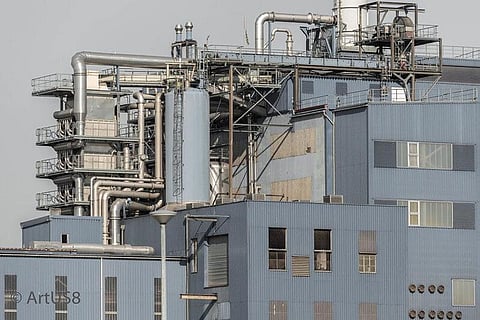
- Home
- NG Hindi
- India
- World
- Politics
- Sex & Relationships
- Entertainment
- Culture
- Lifestyle
- Economy
- Sports
- Sp. Coverage
- Misc.
- NewsGram Exclusive
- Jobs / Internships

By Dr. Kumar Mahabir
Guyana in the Southern Caribbean is set to receive the highest estimated total income from its multi-billion-barrel oil and gas resources under various oil price scenarios when compared to neighbors, Suriname, and Trinidad. Sonya Boodoo, Vice President of Upstream Research, said that three major offshore discoveries have been made in Suriname to date.
The following are EXCERPTS of a ZOOM public meeting held recently (30/8/20) on the topic "The unprecedented expected oil wealth in Guyana and Suriname: Employment and Business Opportunities for Trinidadians and Diasporans." The Pan Caribbean meeting was moderated by anthropologist DR KUMAR MAHABIR from Trinidad and was hosted by the Indo-Caribbean Cultural Centre Co Ltd.
The speakers were CLYDE GRIFFITH, a specialist in Oil Exploration and Exploitation as well as Policy Advisor to the Minister of Natural Resources in Suriname; DHARMINDERPERSAD RAMESAR, a Senior Petrophysicist in STAATSOLIE Maatschappij oil and gold company in Suriname; and SHAUN RAMPERSAD, a Trinidadian working in the offshore oil and gas industry, managing Exxon and Tullow's supply chain in Guyana. The discussant was RAVI DEV, a legal adviser and media consultant as well as a former Member of Parliament in Guyana.
CLYDE GRIFFITH of Suriname said: "What we know so far is that three significant discoveries have been made offshore in Suriname. US multinational investment bank and financial services company, Morgan Stanley, said that Suriname could contain a potential of 6.5 billion barrels of oil-equivalent resources.
Guyana announced the discovery of more than 90 meters of high-quality, oil-bearing sandstone reservoirs about 200 km off its coastline in 2015. Pixabay
STAATSOLIE, together with its offshore partners, commissioned an Industrial Baseline Study in 2018, which has shown that Suriname's business community is not quite ready to deliver goods and services to the offshore oil industry. Developing a local shore base is essential to local-content creation in Suriname.
The key challenges are that Suriname has little experience with the offshore industry and that companies are unsure of the opportunities, and are very cautious to invest in certification, capacity improvements, or diversification of goods and services offerings. Meanwhile, the local-content policy is being drafted, plans for a local shore-based are being discussed as well as Technical and Vocational Educational Training (TVET) centers are being upgraded to prepare Suriname workforce and business society for first-oil, which is expected around 2025."
DHARMINDERPERSAD RAMESAR of Suriname said: "In 2008, STAATSOLIE hired international consultant DAI Global Inc. to do the Industrial Baseline Study on behalf of STAATSOLIE and its offshore partners. DAI has conducted similar studies in recent years in countries such as Guyana and Ghana. DAI has interviewed more than 200 local companies and 12 different technical training and training institutes.
A large proportion of the assignments normally go to a large, specialist, international companies. Nevertheless, there are plenty of opportunities for local businesses to join, provided they start preparing now.
Suriname estimates to hold almost 14 billion barrels of oil and 32 trillion cubic feet of natural gas. Pixabay
Newly-elected President Chan Santokhi and Guyana's President Mr. Irfaan Ali, have talked about the possibilities of a 'seaport'.
There are enormous reserves of bauxite in Zuid west of Suriname (Bakhuis) with the discovered Gas and gas condensate. These projects can be worked out (since Trinidad has experience with Gas mining)."
RAMPERSAD of Trinidad said: "The Guyana-Suriname basin has the highest drilling success rate of any frontier basin in the world. The large fields discovered may be the start of a new North Sea here in the Southern Caribbean. The break-even rates for these deep-water developments are also some of the lowest globally ($35/bbl), meaning that even in a low oil price environment, these projects will almost certainly proceed. Therefore, development within these two South American countries hinges largely on the success of their budding offshore oil and gas industry.
For the last five decades, Trinidad and Tobago's oil and gas sector has been the country's economic driving force. Pixabay
With Trinidad and Tobago's experience in the sector, combined with this unprecedented activity in Guyana and Suriname, our vision is to now pool resources and strengthen ties to ensure that a regional oil and gas industry is developed. The key to long-term growth lies in the scaling of businesses to cater to the region collectively, rather than focusing on one country.
Our RAMPS company employs over 500 persons across these 3 countries, with almost 100% local content in each territory. We have learned a lot working for dozens of top tier companies like Exxon, Petronas, and Schlumberger. … We want to see many more locally-grown companies exporting high-quality services and products worldwide and competing with the best out there.
ALSO READ: Mustard Oil: An Entrusted Immunity Booster
RAVI DEV of Guyana said: "First of all there is not going to be any "unprecedented oil wealth" in Guyana in the near term. The poor negotiation by the previous People's National Congress (PNC) regime with Exxon left Guyana with a contract that gives them at max, 2% of gross and 12.5 % of profits, which in the present depressed oil market, have not even made up for the shortfall in sugar and other agricultural production and revenues. In any case, the oil funds are sequestered in a 'Natural Resource Fund' at The Federal Reserve Bank of New York."
